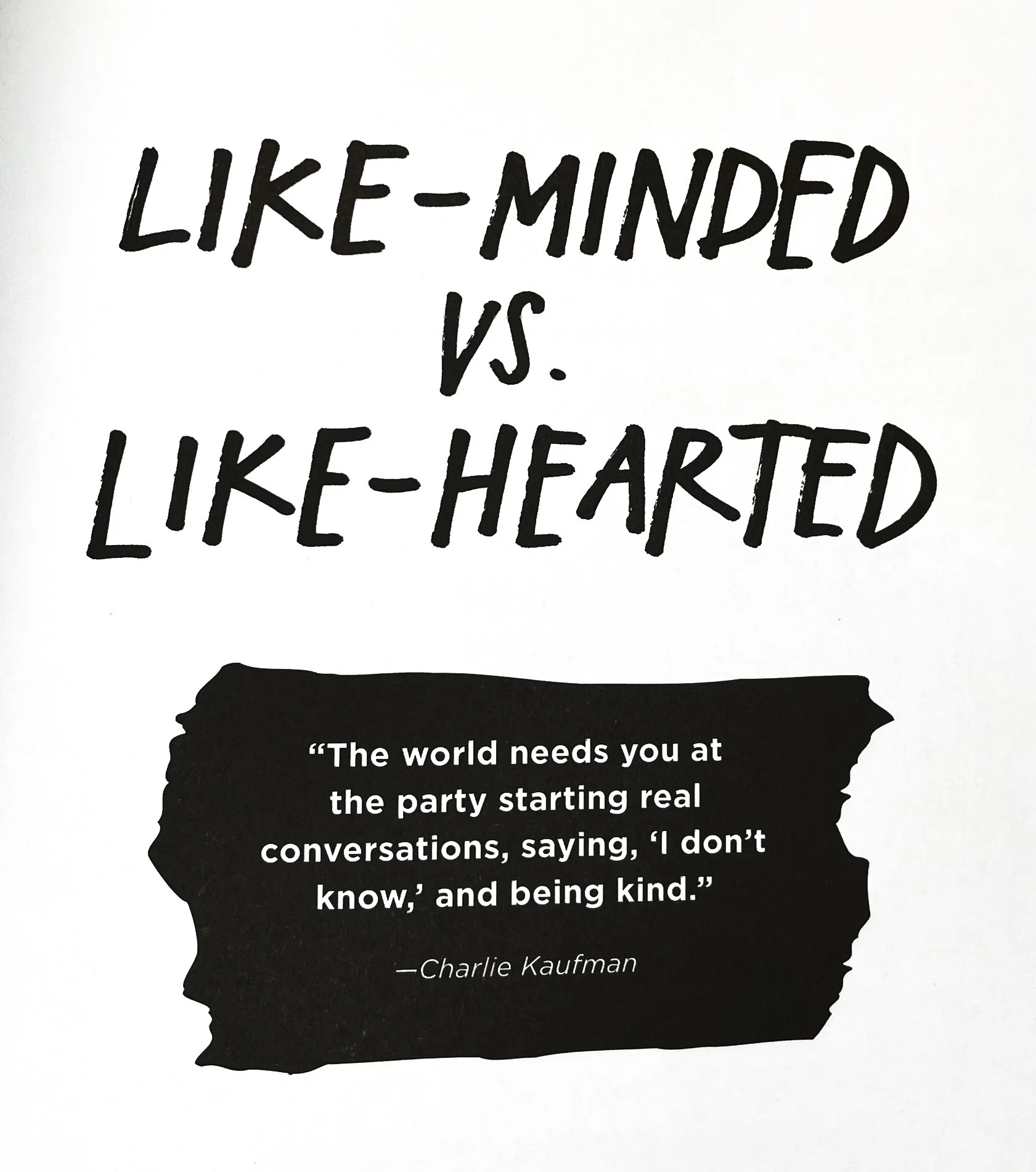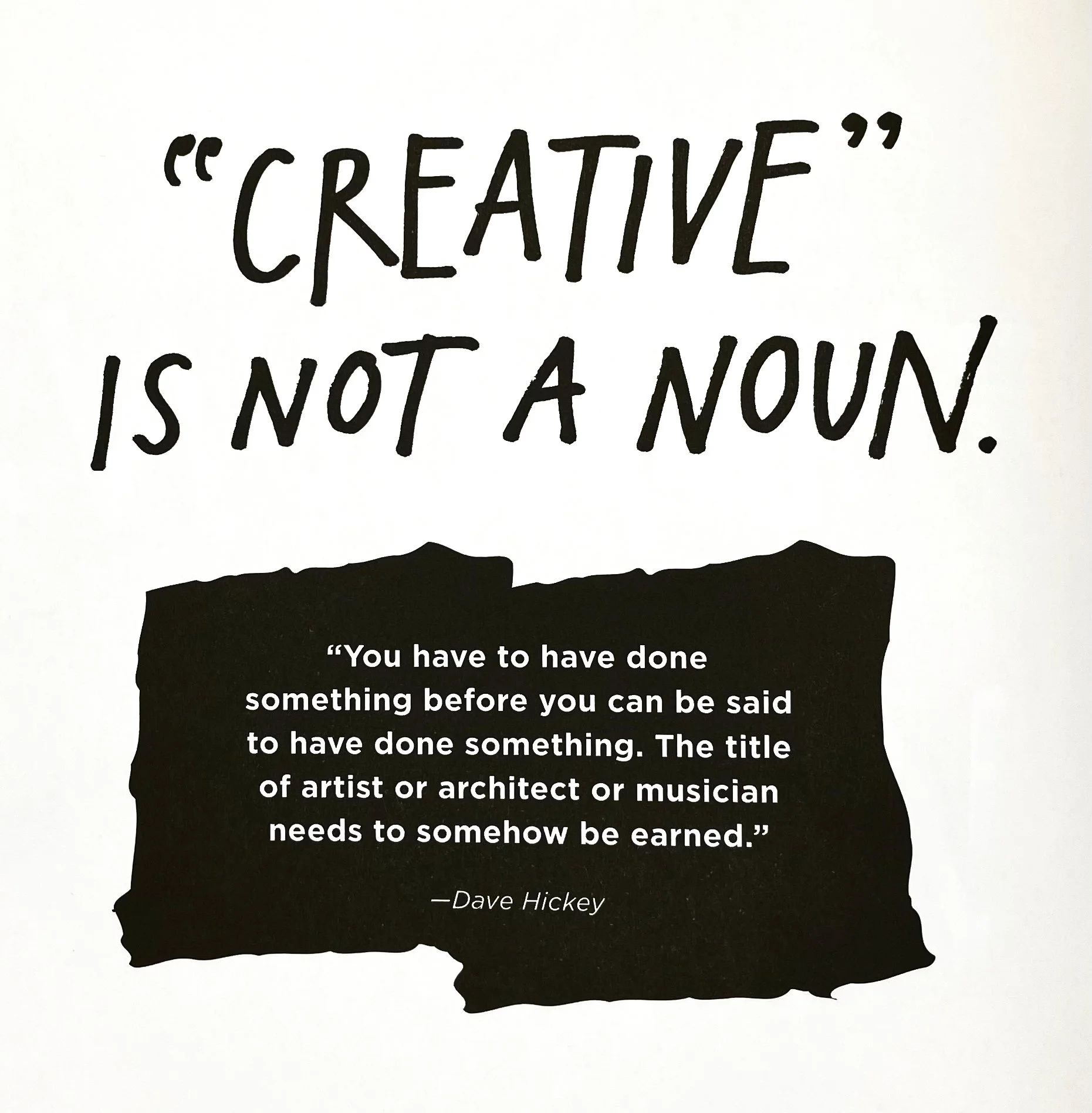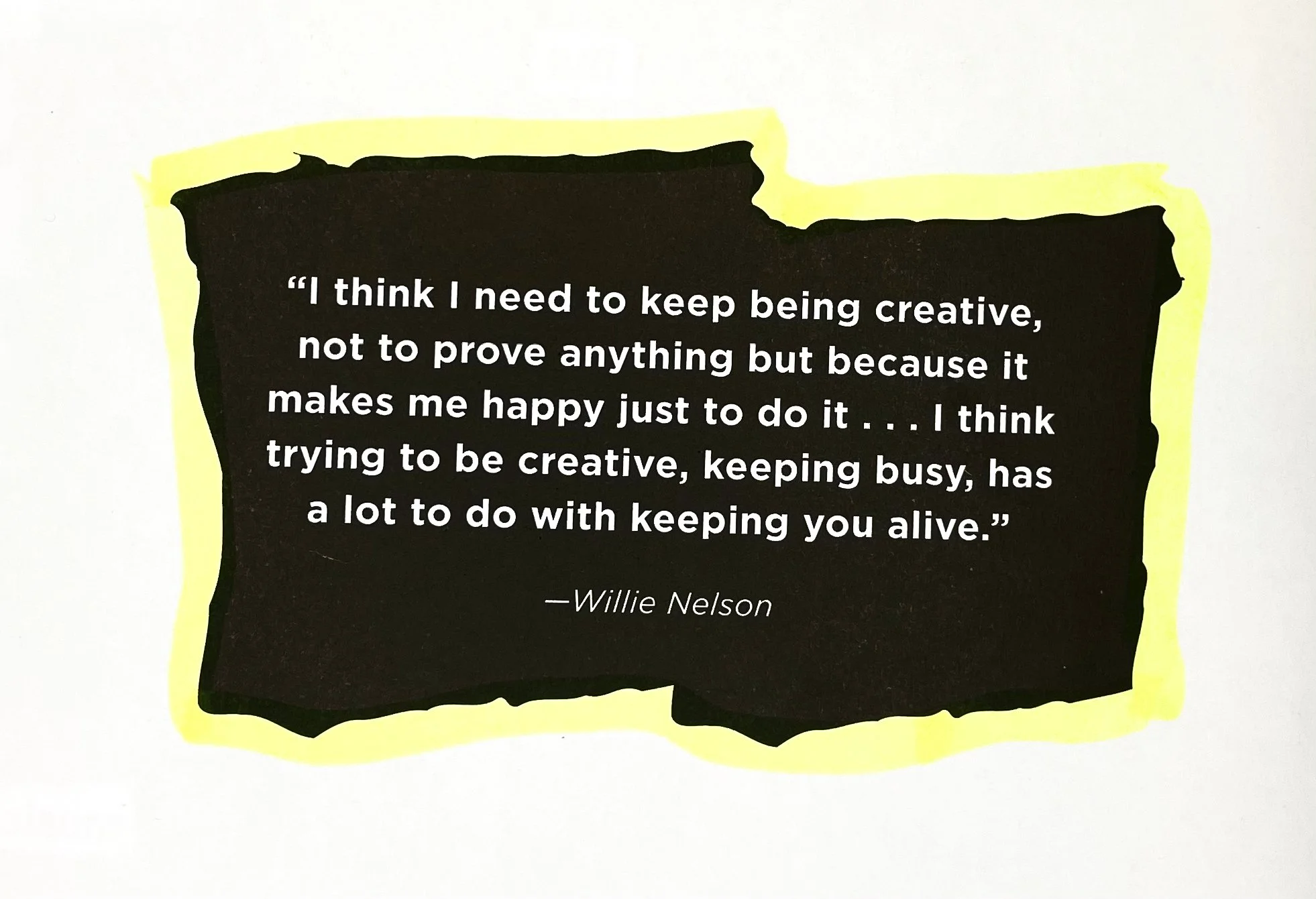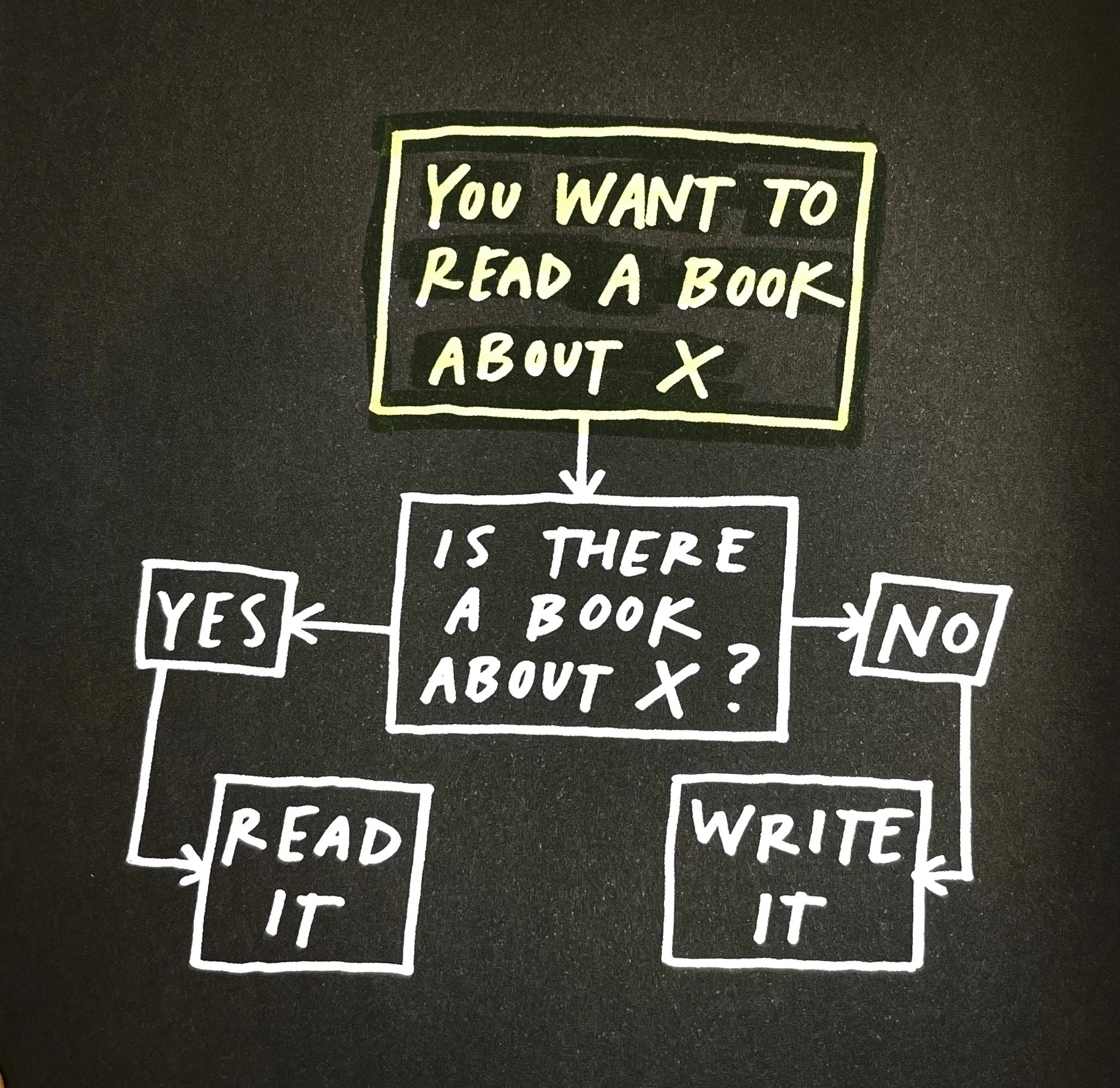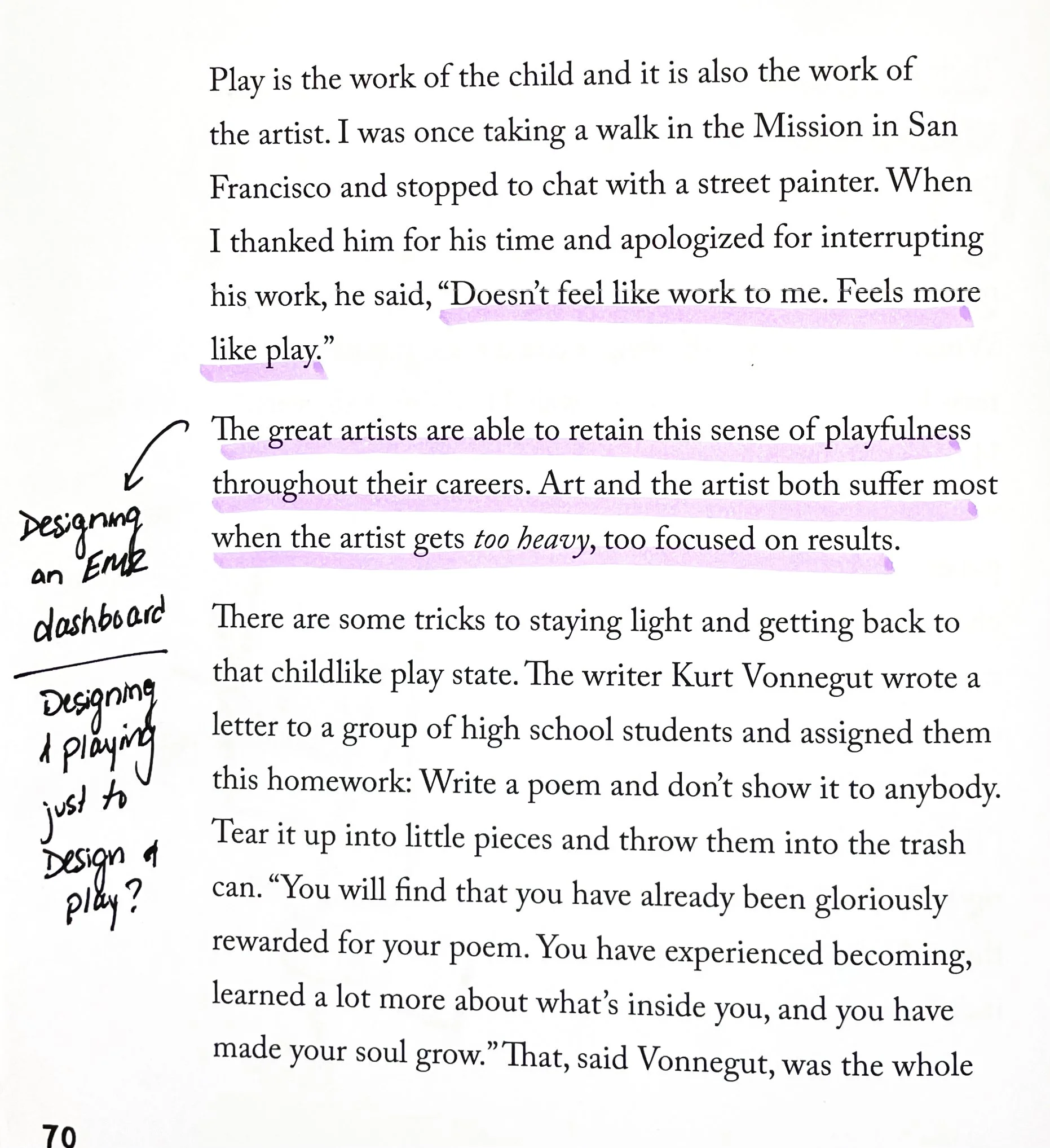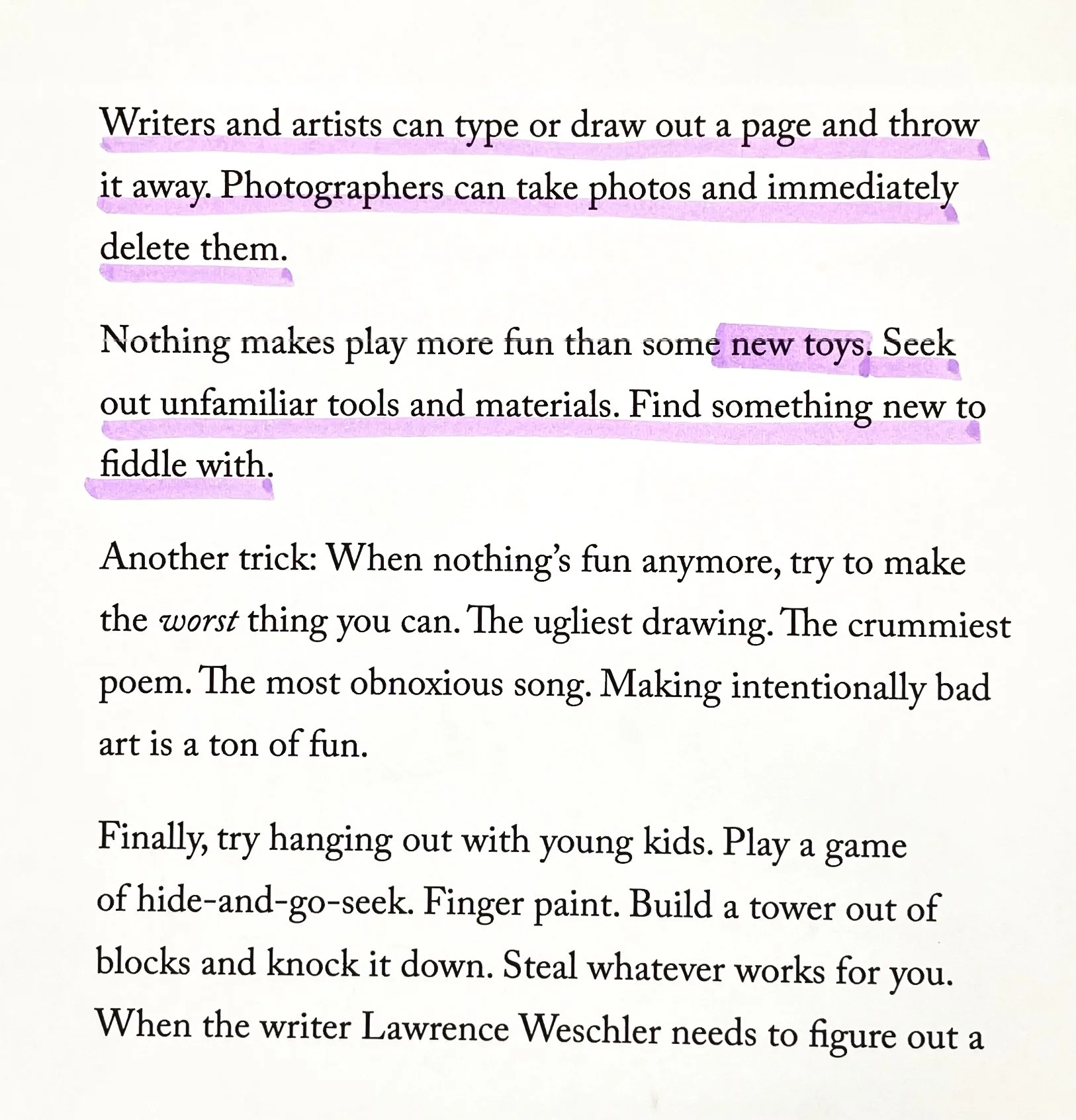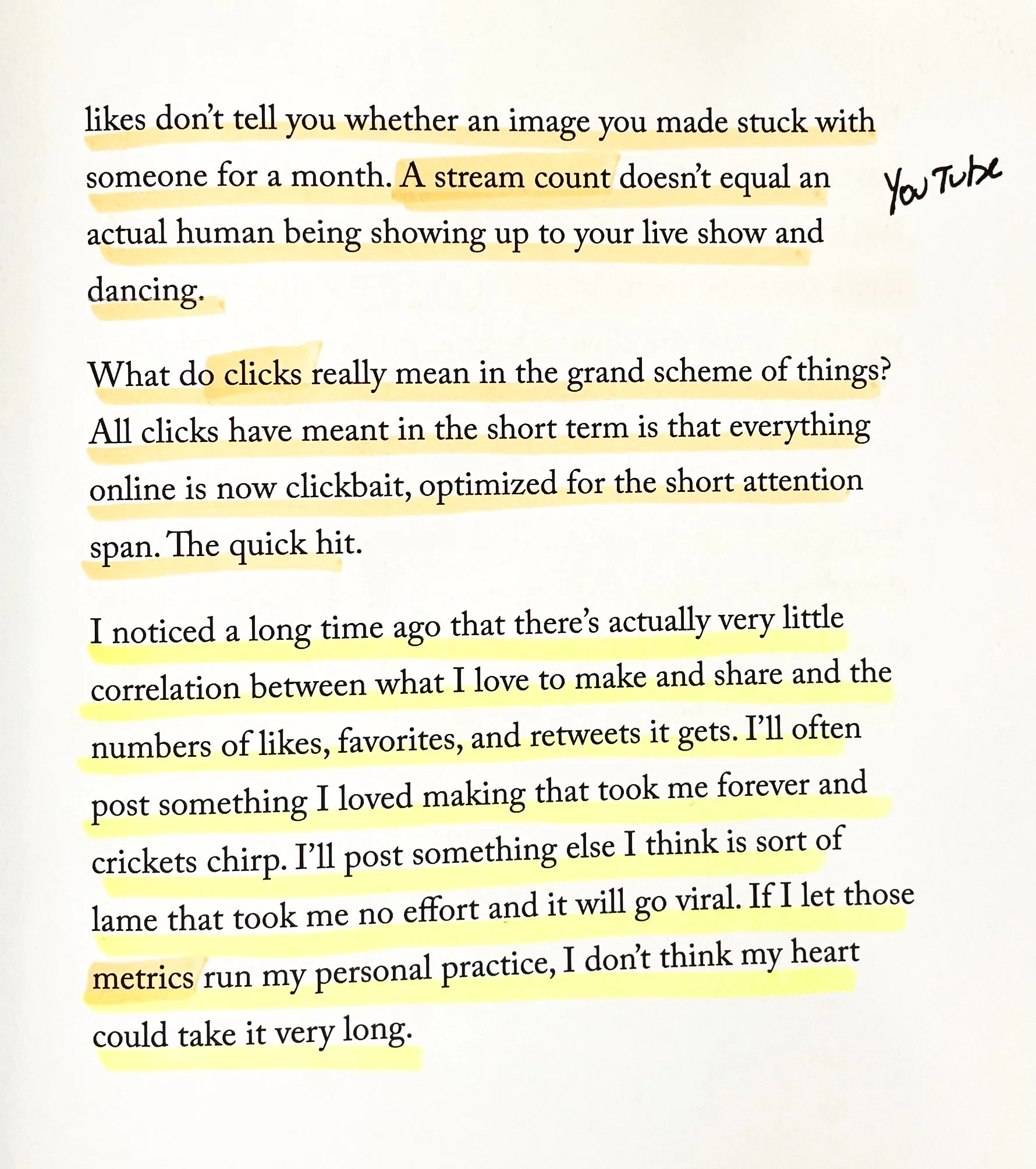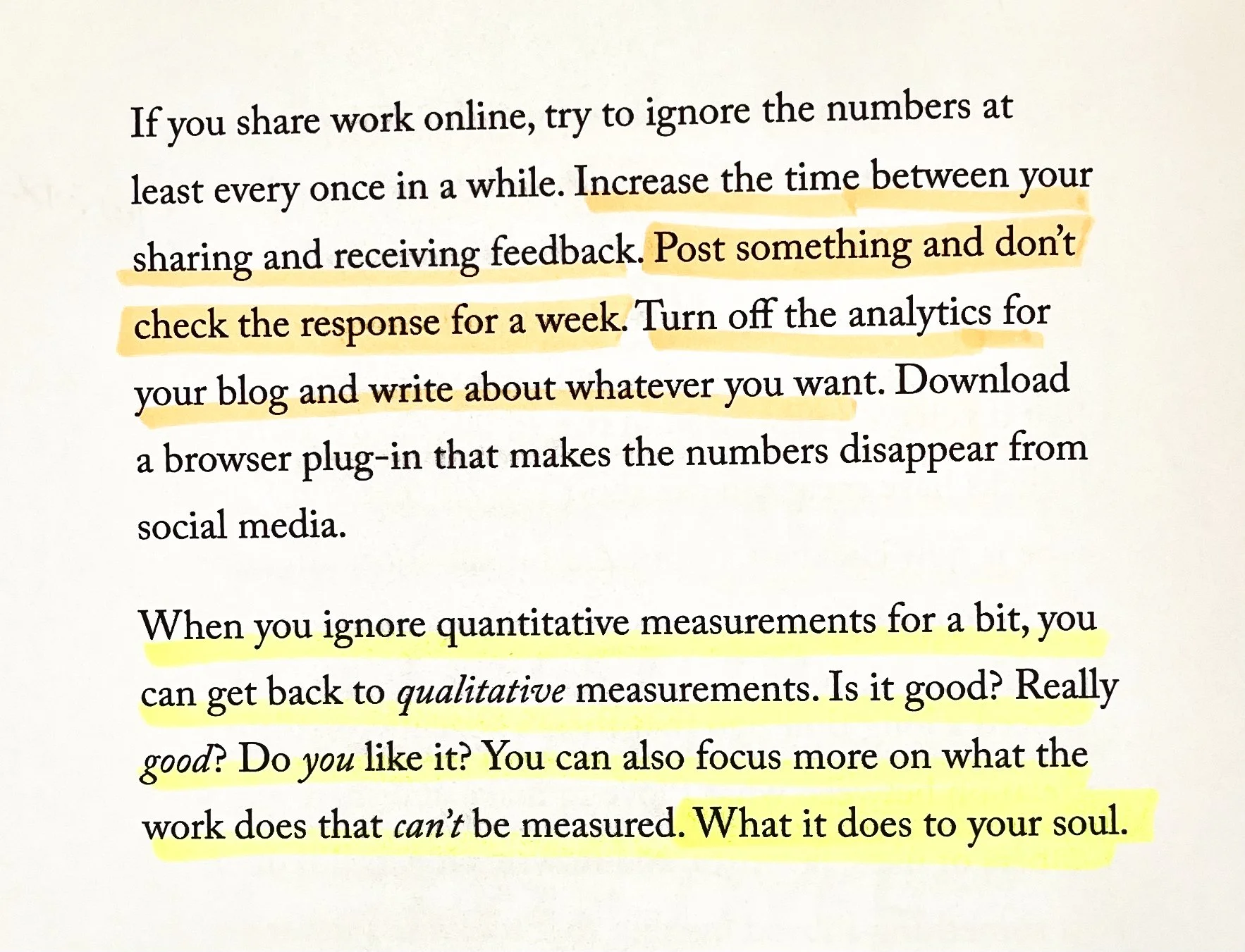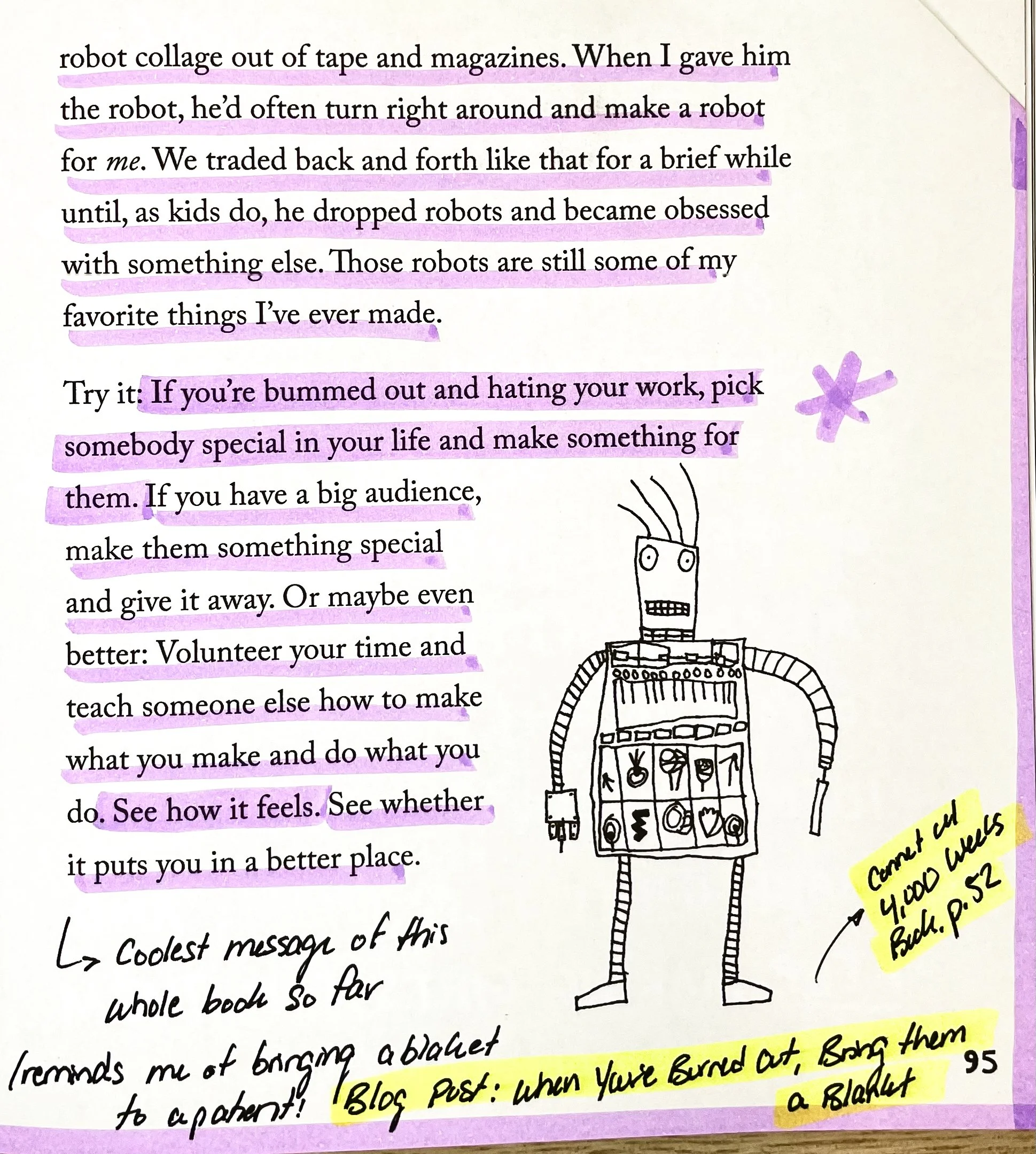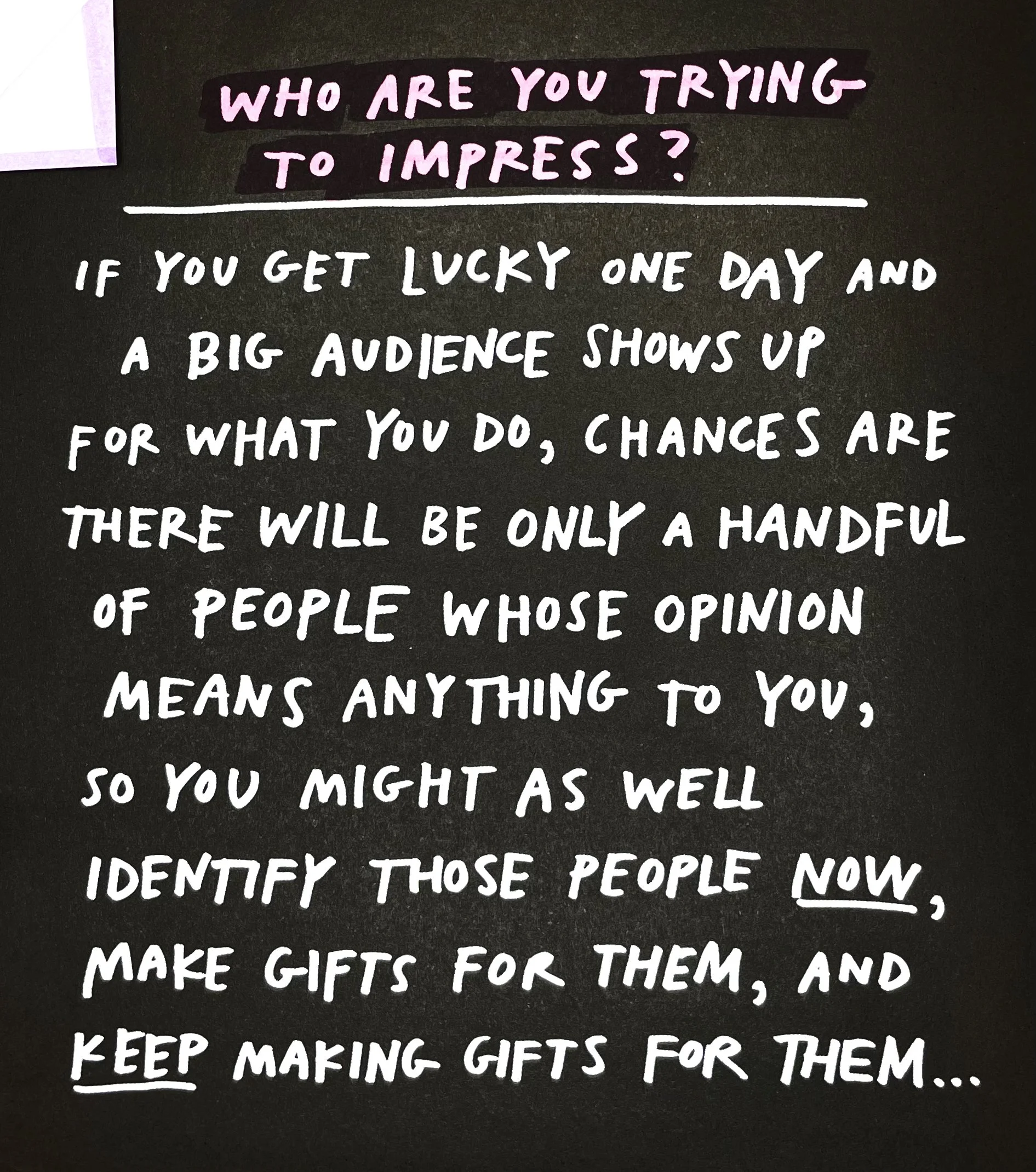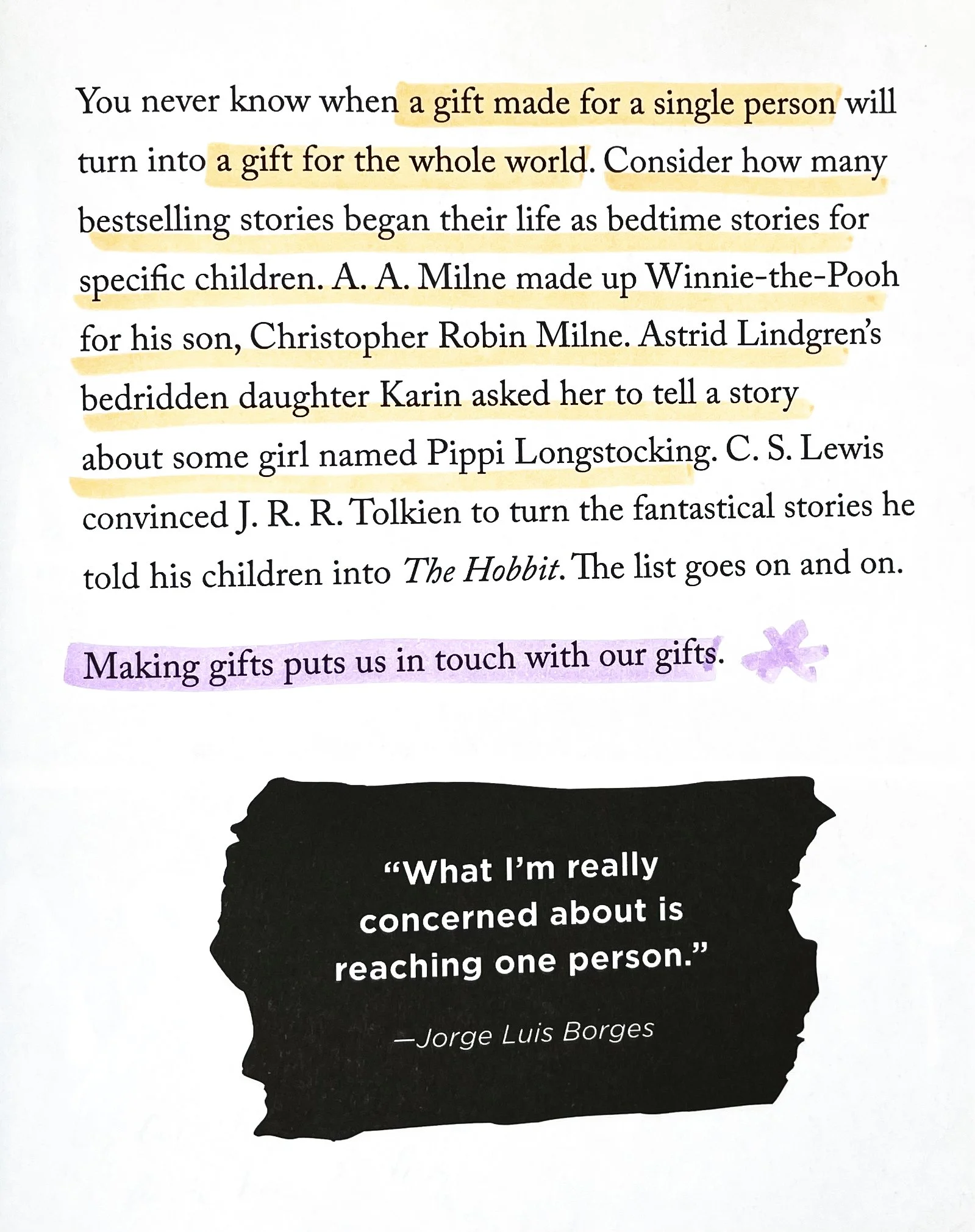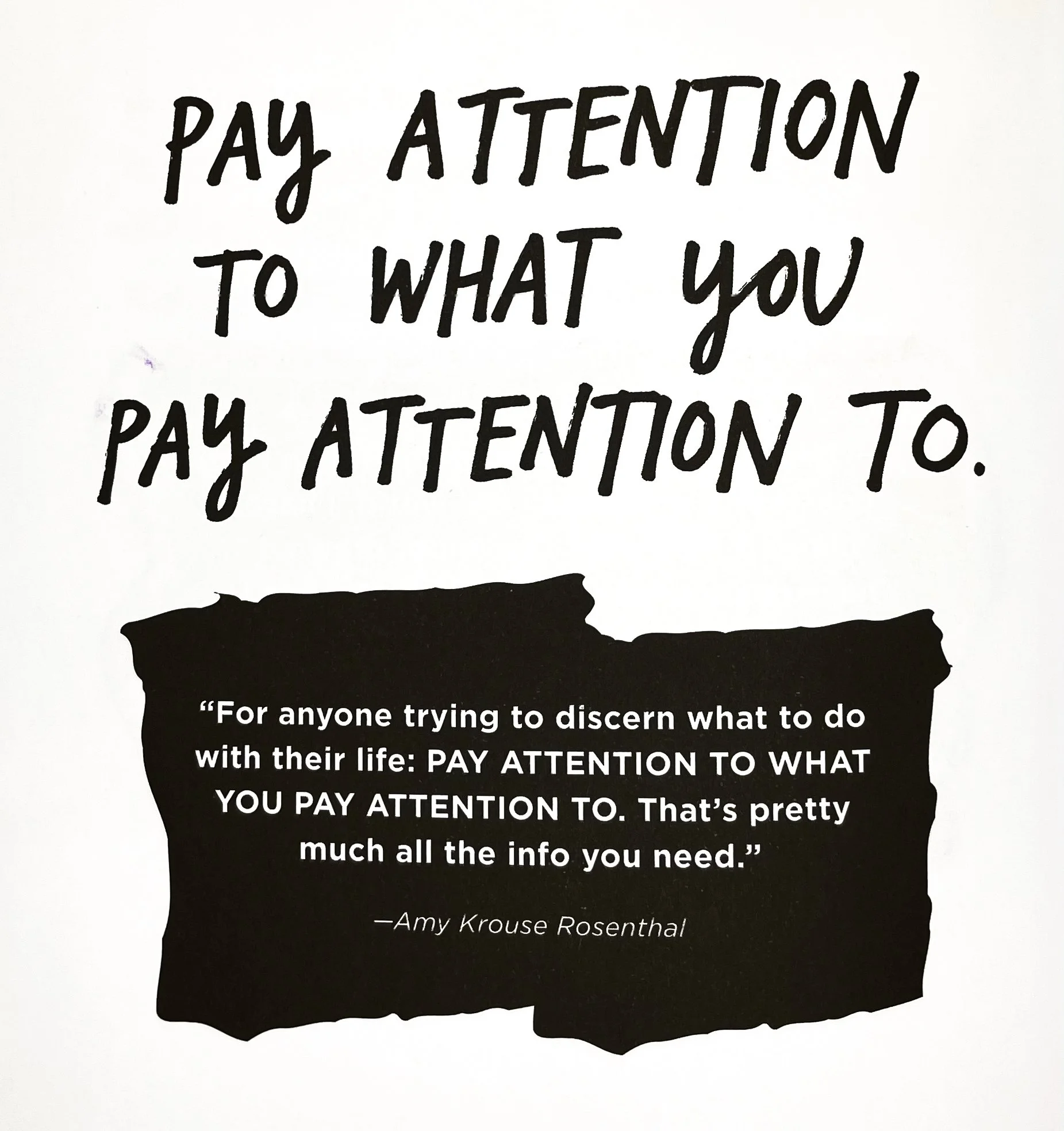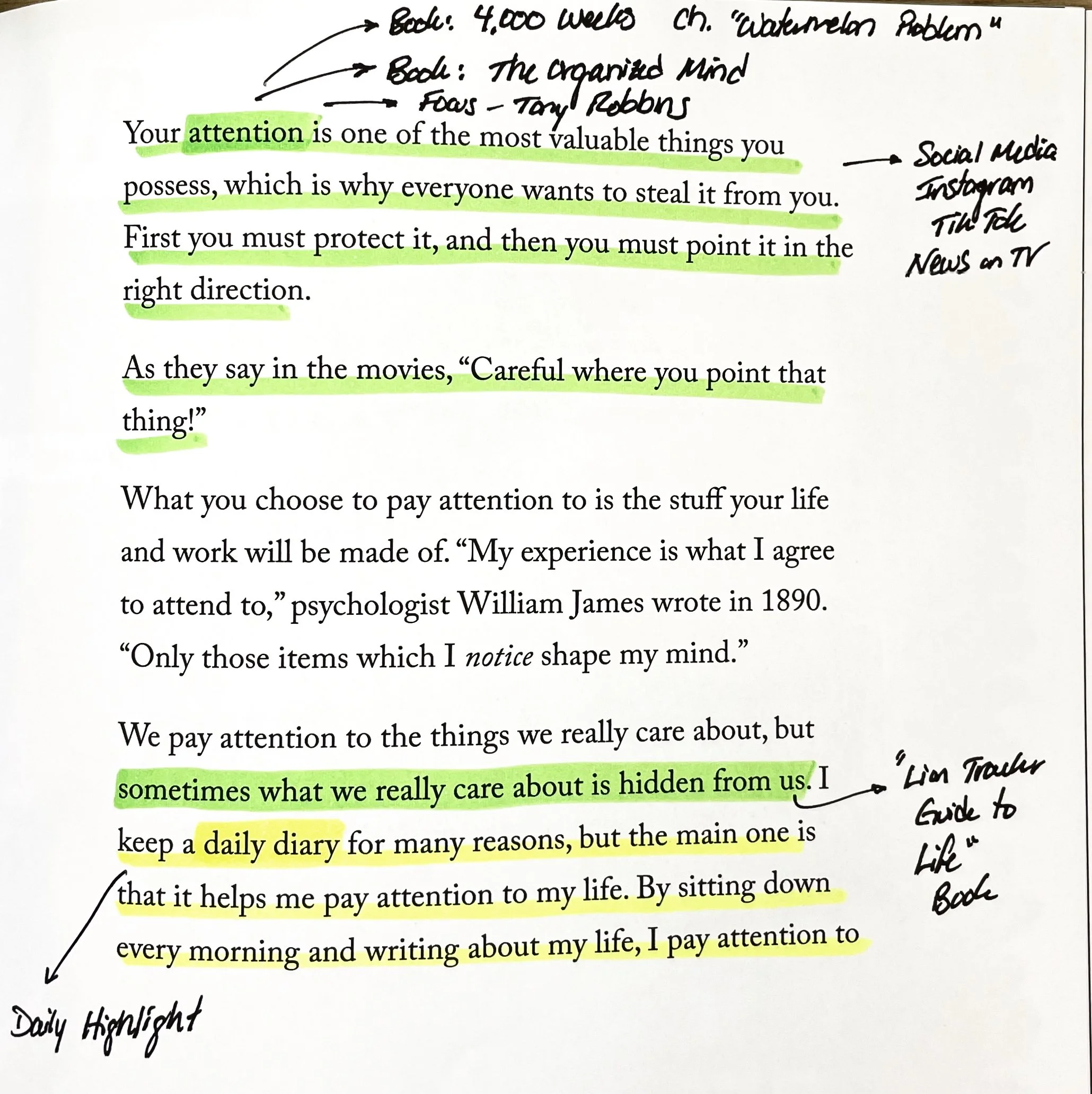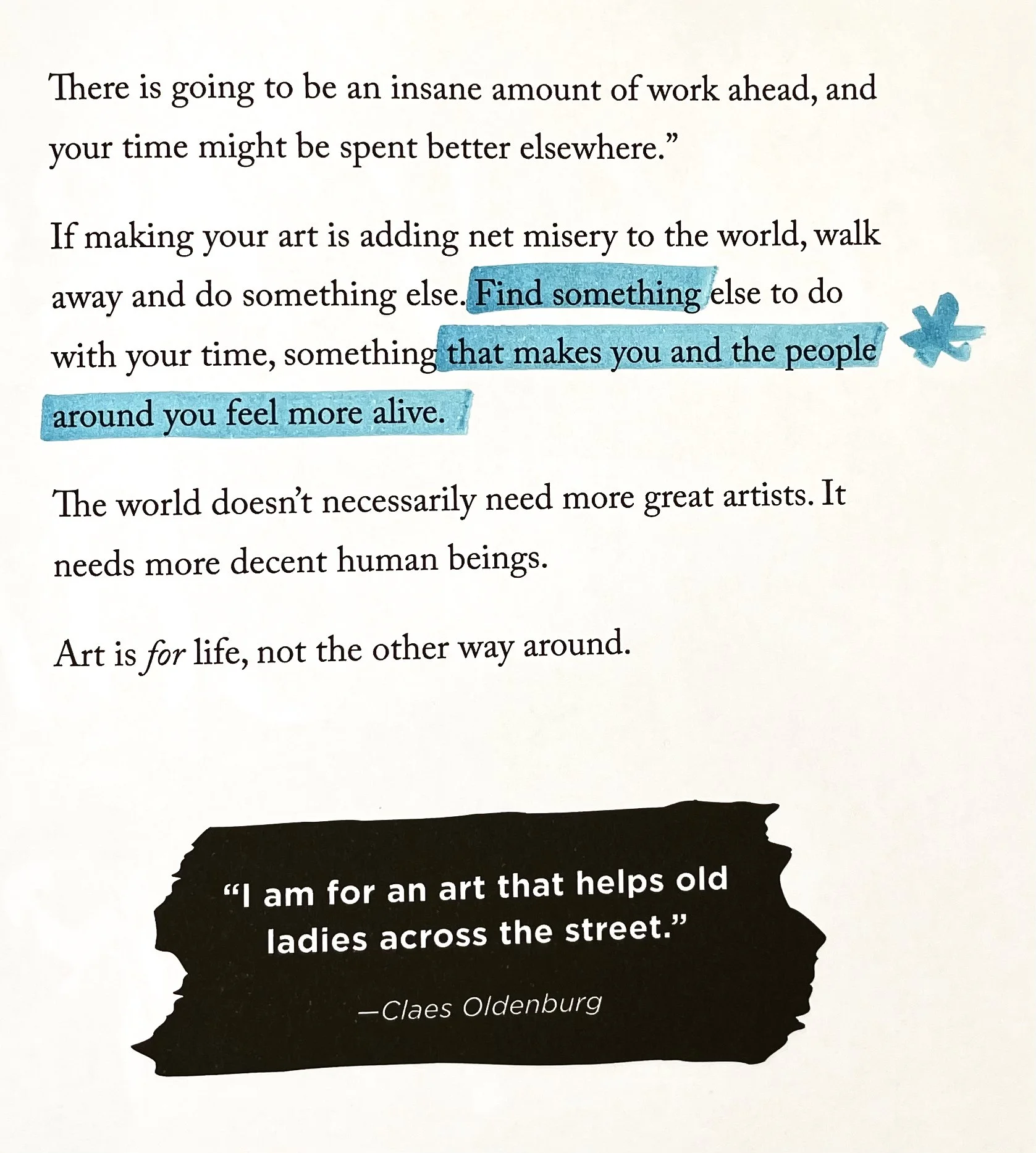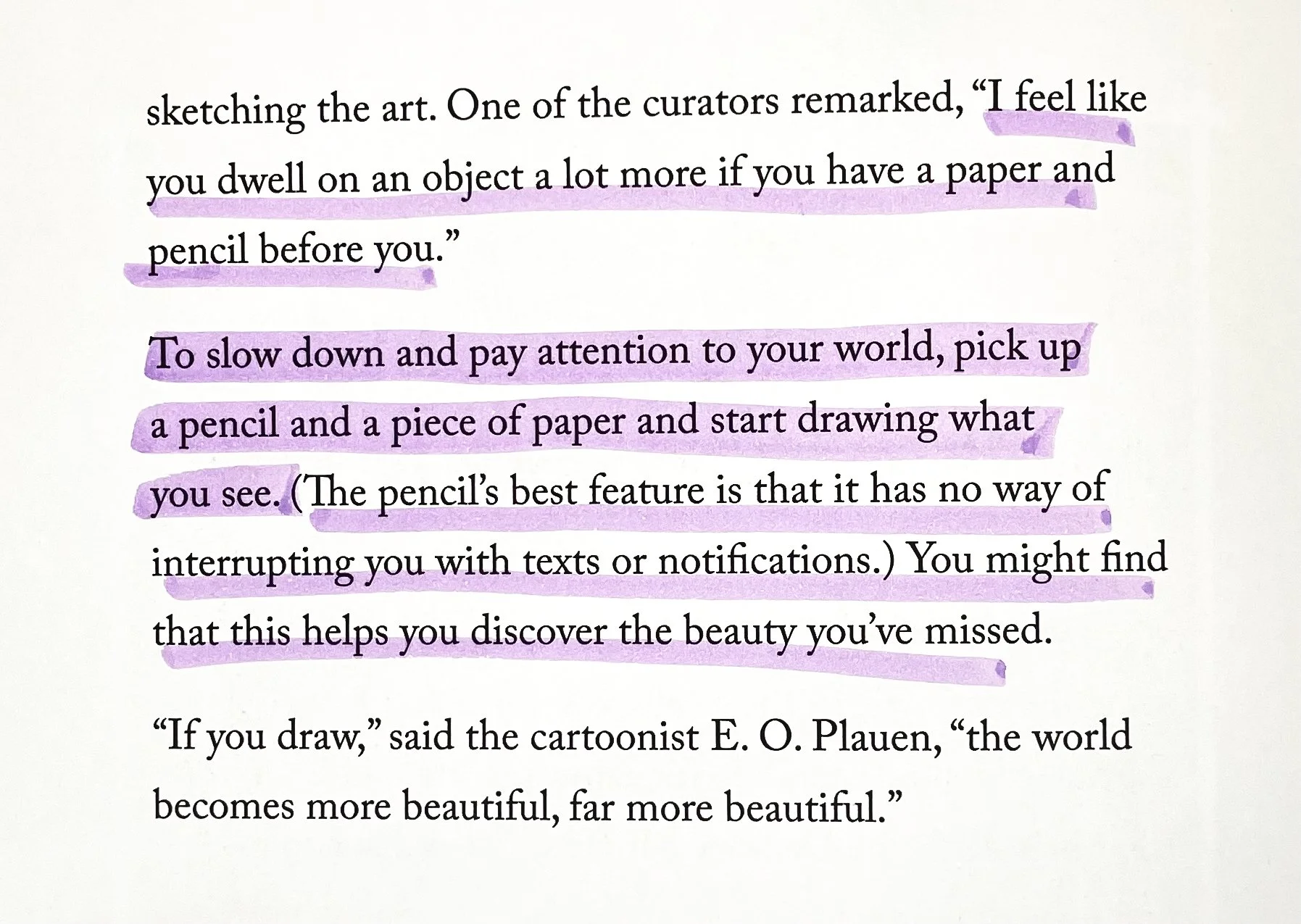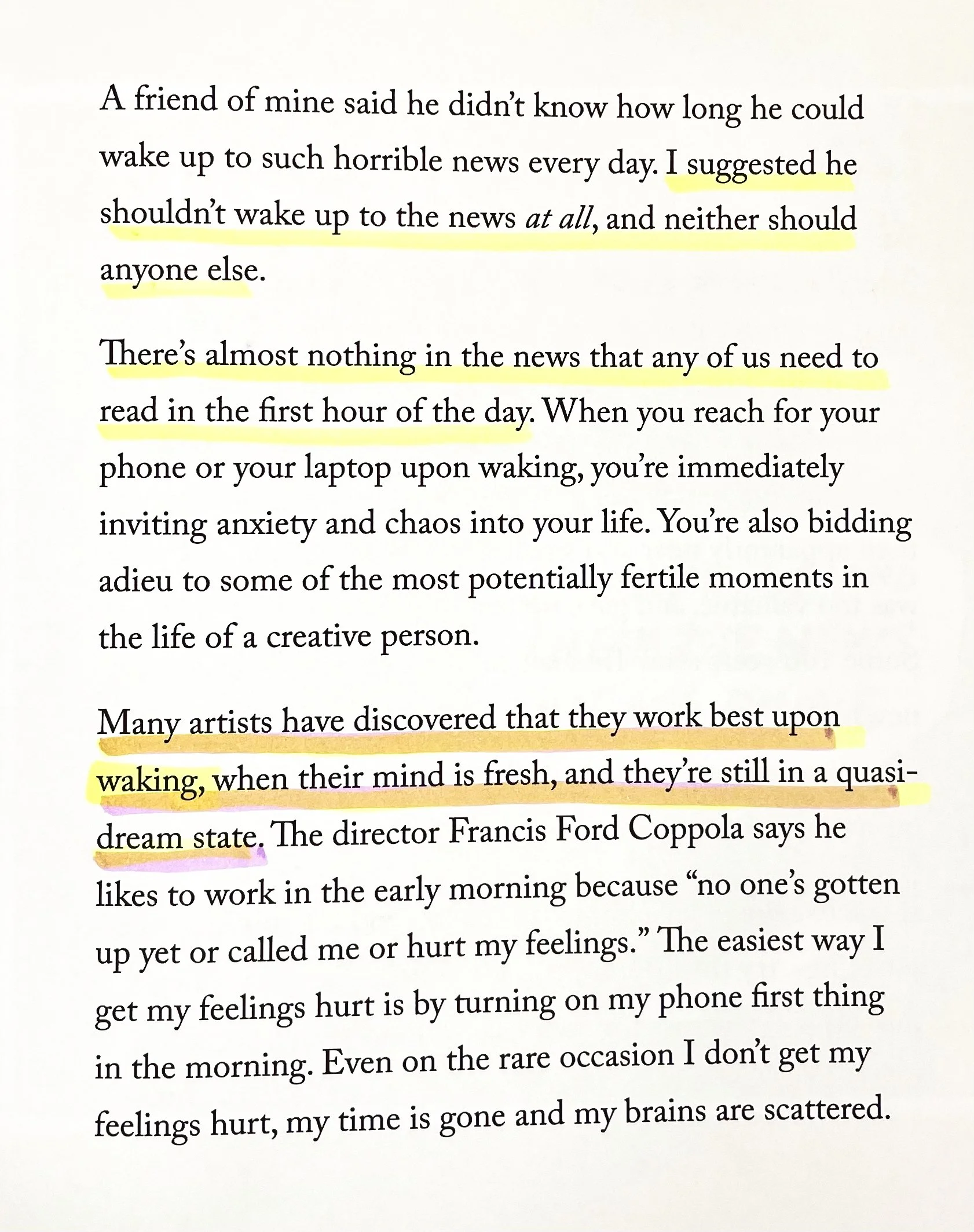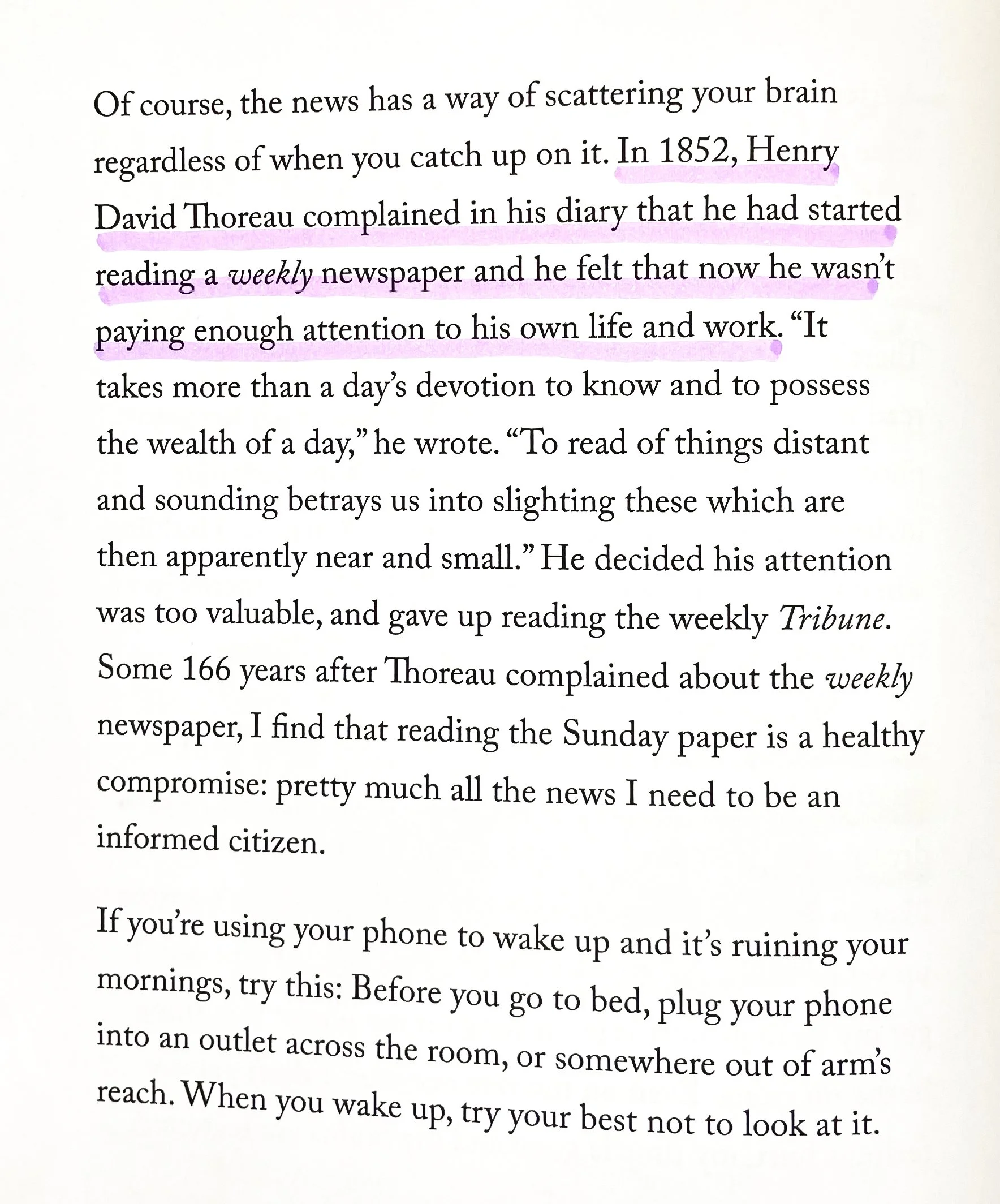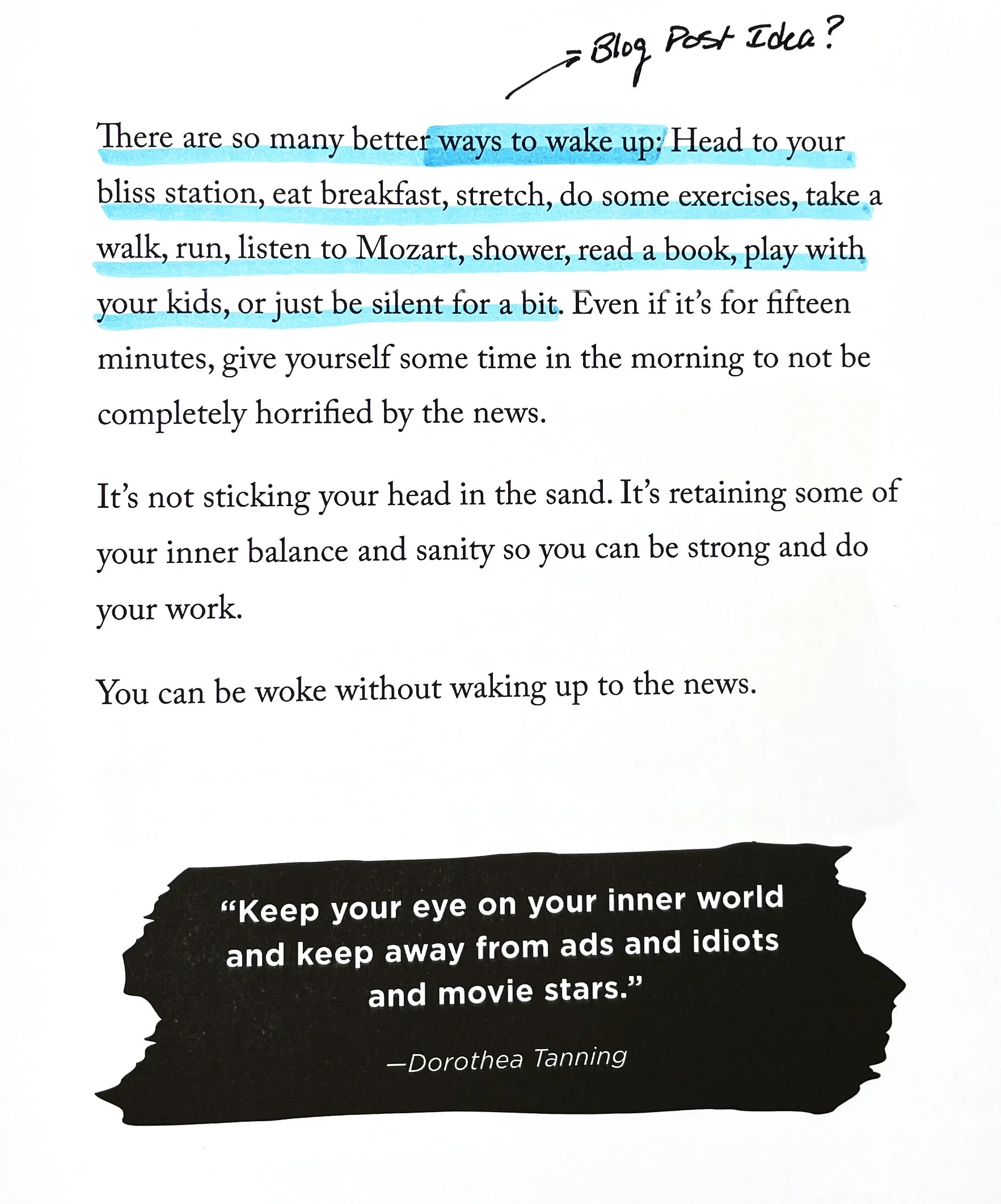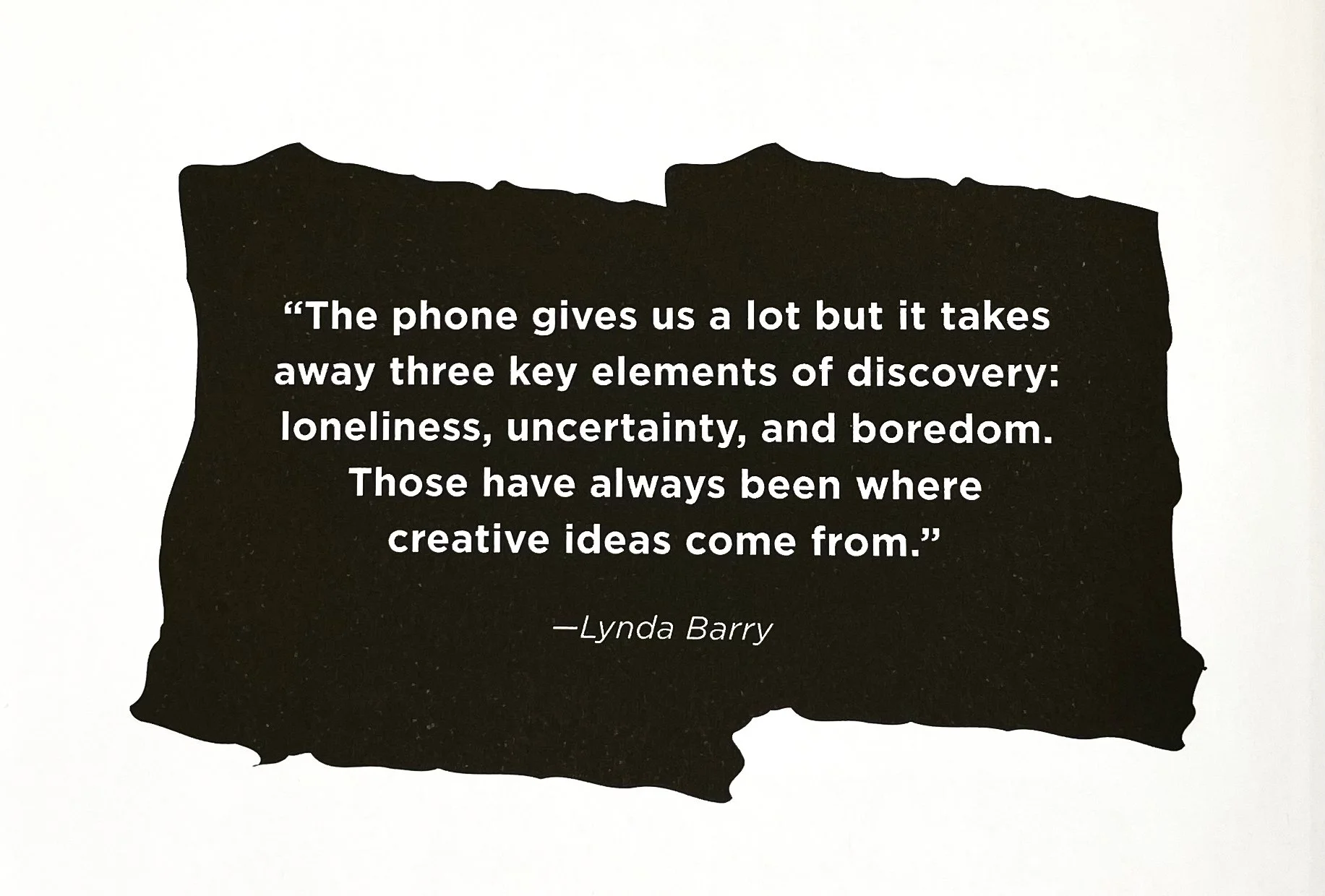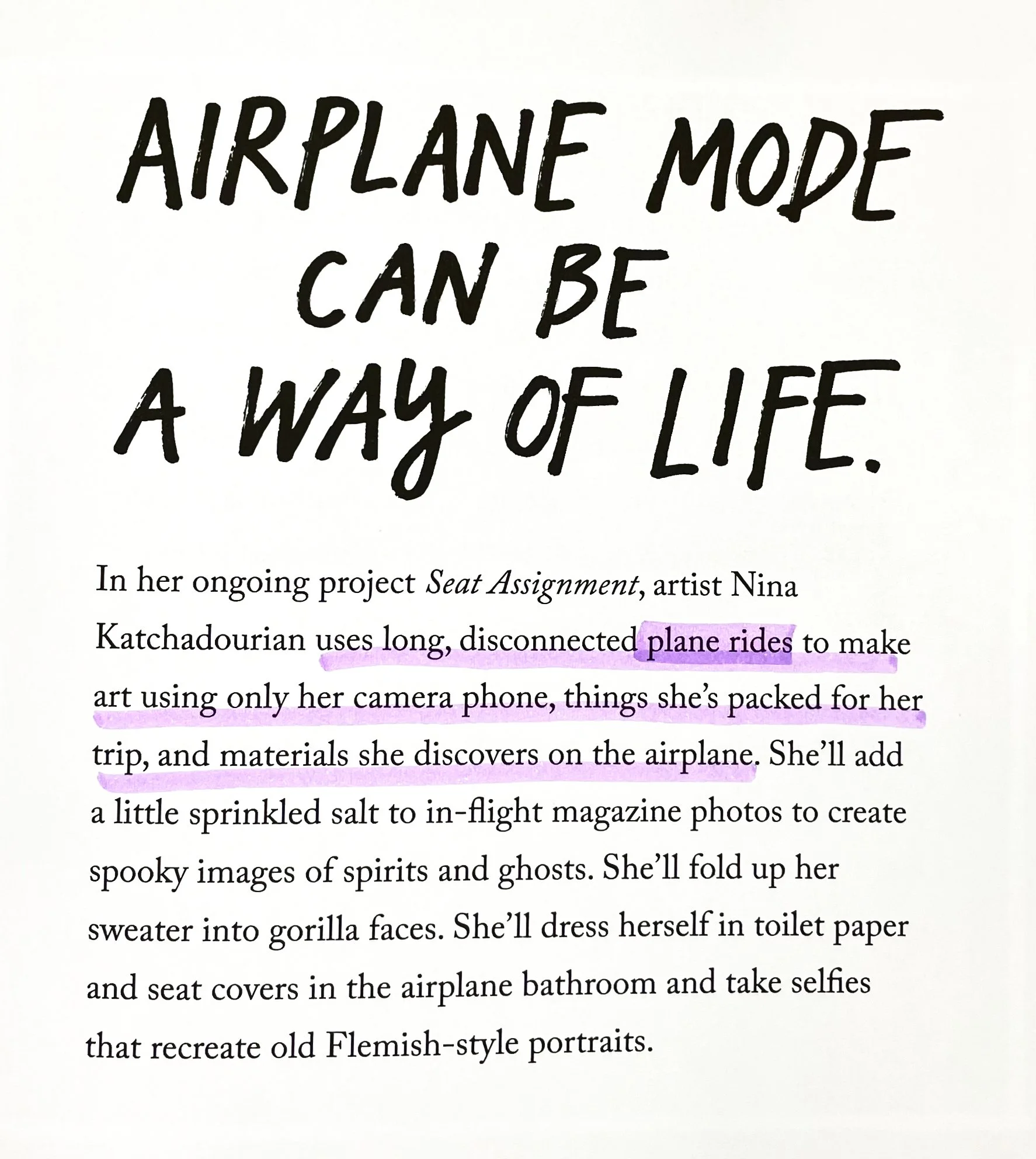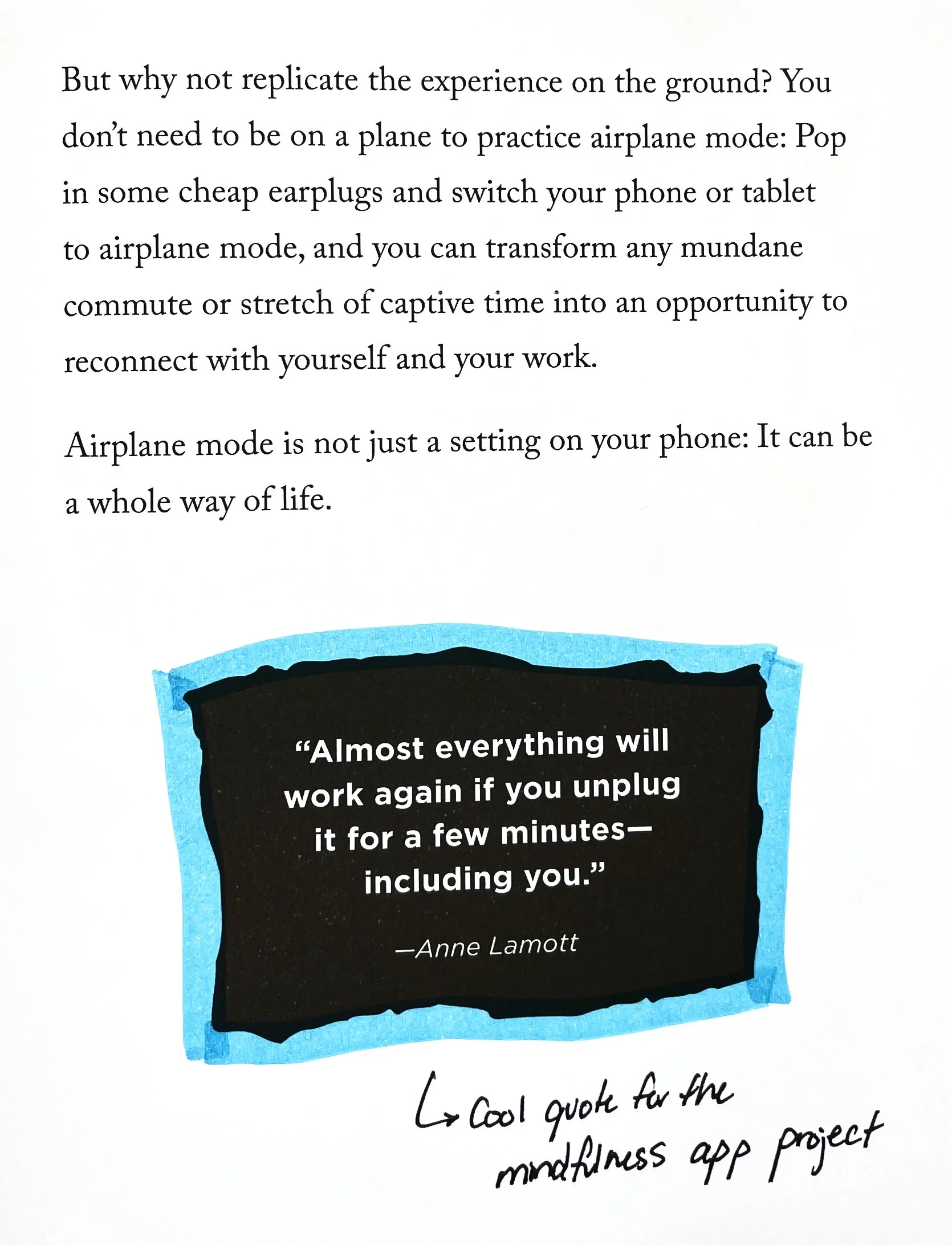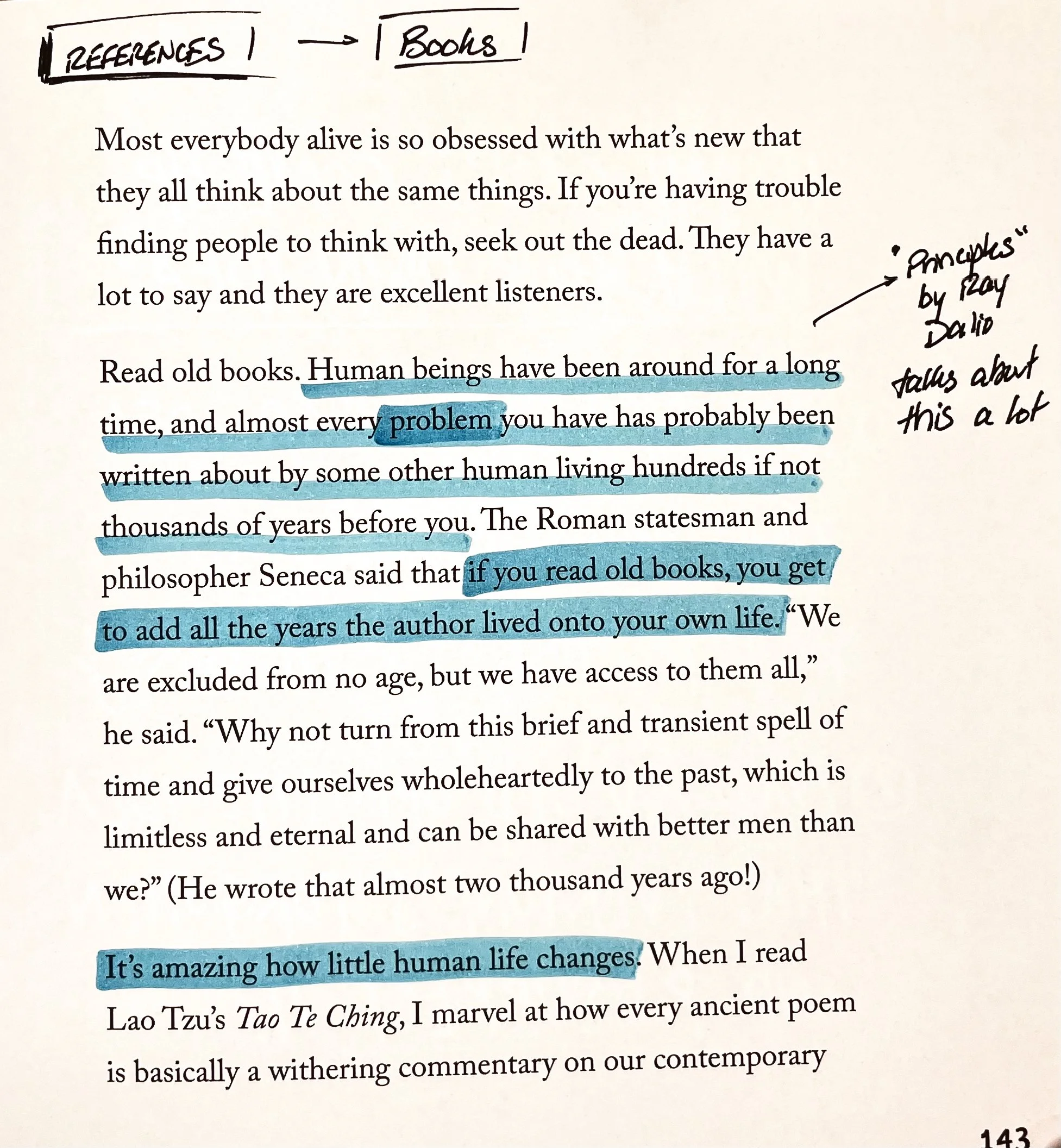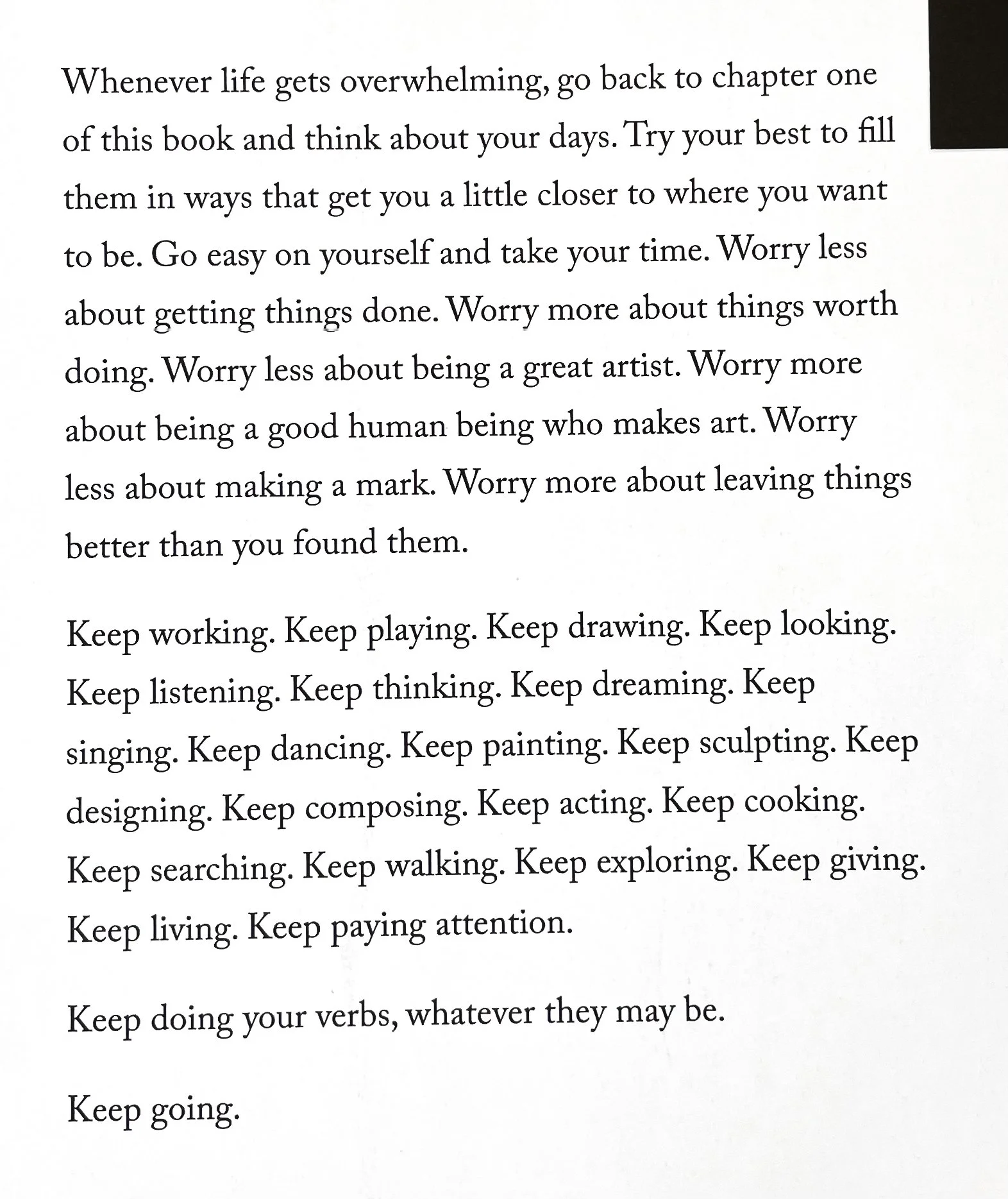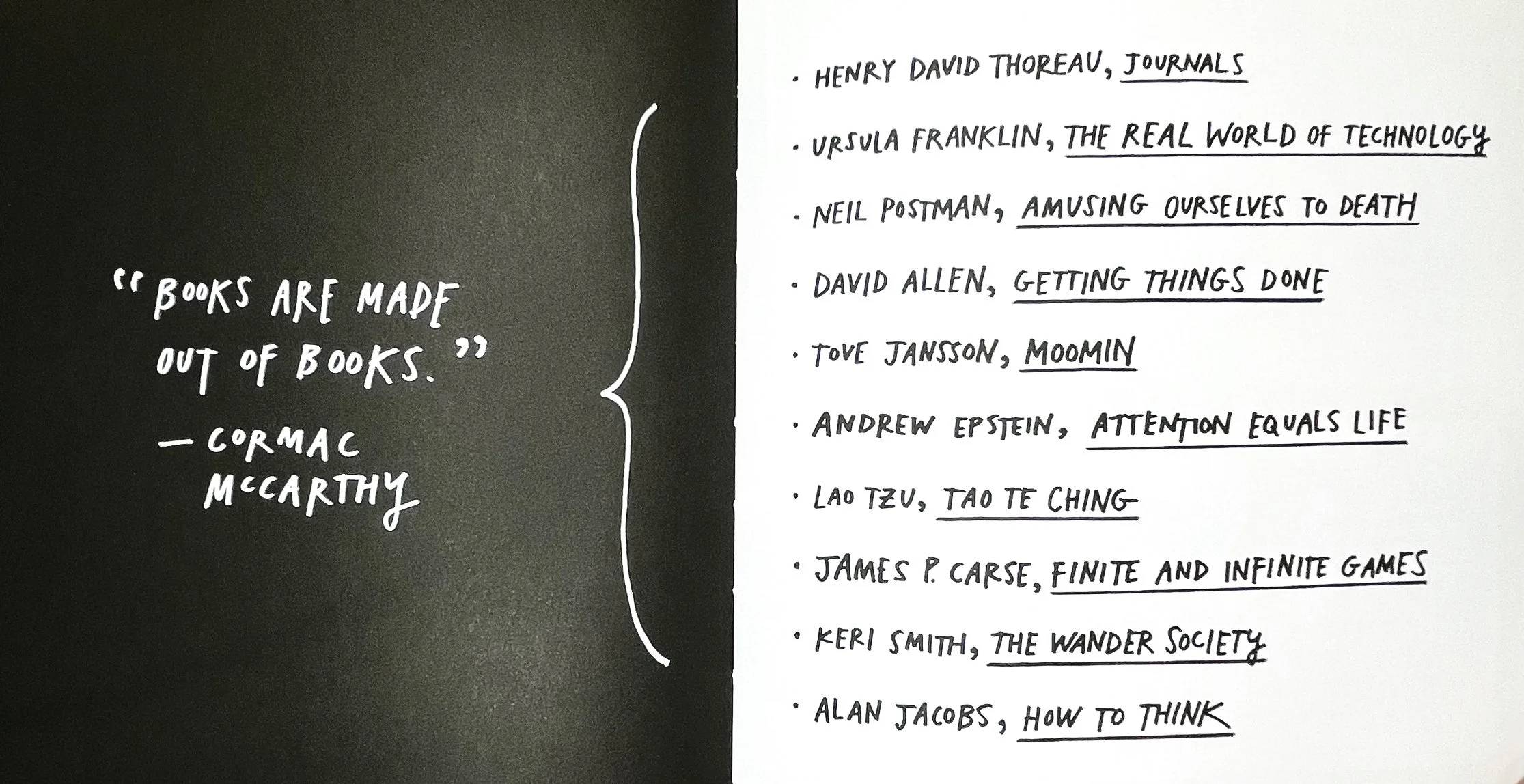Keep Going
Author(s): Austin Kleon
How much I would recommend this book to other medical students/residents: 8/10
Buy it on Amazon: Link
How can we learn from those who don’t share our perspective?
In Emergency Medicine, I think sometimes we can learn the most from the people who don’t share our perspective (nurses, patients, co-workers, etc). The more we listen, the more we rethink our assumptions and/or strengthen our ideas.
“Creative” is not a noun
^^ One of the reasons I decided to create this website. Being creative and exploring ideas makes me happy.
In Emergency Medicine, everyone is creative. Here’s some examples how providers use creative thinking:
How we explain a disease and decision-making to a patient and family
How we communicate with our team
How we juggle a number of tasks
How we innovate within our field
Do the verb. Don’t worry about the noun. Learn. Teach what you know to others. If you have a creative idea, explore it. Don’t worry about the job title.
Musicians can jam without making a recording.
Seek out unfamiliar tools and materials. What tools do engineers use to solve problems? Artists? Software designers?
What would our work look like if we used some of those tools in the Emergency Department?
Ignore the Numbers
This is another reason why I decided to build this website. I can share without focusing on the metrics. If someone reaches out to me and says they enjoy it, or found something helpful, then that’s a win for me. Those are the metrics I care about.
I think this is interesting if applied to Emergency Medicine. What if we measured how many times we bring a patient a blanket? Or many times a patient said “thank-you”? Or if we could measure how much of a positive impact we had on medical students that rotate with us?
In my opinion, the interpersonal interactions in medicine are what make us feel human. If we could do all of our doctoring behind a computer screen, I don’t think our jobs would be nearly as meaningful.
Who had an impact on you during your medical school or residency training?
What could you make for them?
Pay Attention to What You Pay Attention To
In my opinion, this is the essence of mindfulness. Taking a step back to watch your thoughts, and notice what things take away your energy, and what things energize you. Trying this for ten minutes on shift in the Emergency Department is actually pretty eye-opening.
The topic of our “attention” is one that I keep reading about in many different books. A few of my favorites on this topic:
“The Watermelon Problem” chapter in the book “Four Thousand Weeks” by Oliver Burkeman
“The Lion Tracker Guide to Life” by Boyd Varty
“Awaken the Giant Within” by Tony Robbins
This is the essence of “The Lion Tracker Guide to Life” book by Boyd Varty. By paying attention to what we pay attention to, we can identify our own patterns, and become clear on what we really care about.
In Emergency Medicine, this might be to identify our niche within our specialty to pursue further training on. Do you feel energized learning about point-of-care imaging while on shift? Maybe a fellowship in ultrasound is something to look into.
Do you feel energized when you get to help a medical student with their first procedure? Maybe a career in academics and education is something to look into.
A lot of these interests become obvious with time, but many of them might only be uncovered if we pay enough attention to ourselves to identify what we really care about. There are so many niches within Emergency Medicine alone, and I think this is a really interesting way to think about them.
Lots of pictures of hiking and outdoors on your phone? Maybe Wilderness Medicine is a fellowship to explore a little more.
In my opinion, the more our work niche aligns with our personal interests, the more we will contribute to our field and bring more to the world. It will make ourselves and the people around us feel more alive.
Slow Down and Draw Things Out
I absolutely love drawing for this reason. It connects you with a scene at a deeper level than even photography can. It forces you to pay attention to the details, and you notice the intricacies of what’s in front of you.
Drawing a place allows you to see your environment with a completely different lens. Almost like using night vision goggles at night… When you draw, all of a sudden all the details become clear. You notice things that you didn’t notice before.
These are all drawings of hockey scenes or hockey players in their element…
… I wonder what a sketch of a busy trauma bay in the Emergency Department would look like?
A close-up sketch of the face of a 92-year-old being admitted to the ICU?
An exhausted resident, with wrinkles on their face wearing a worn N-95 mask?

